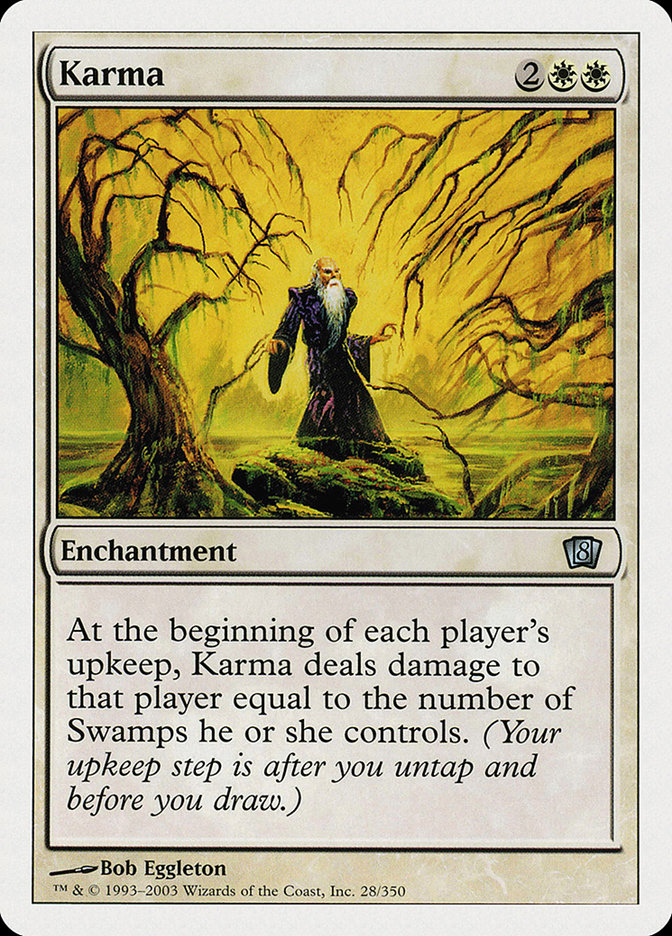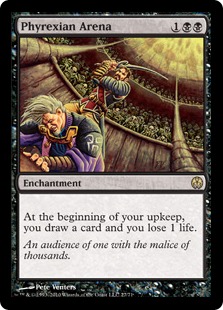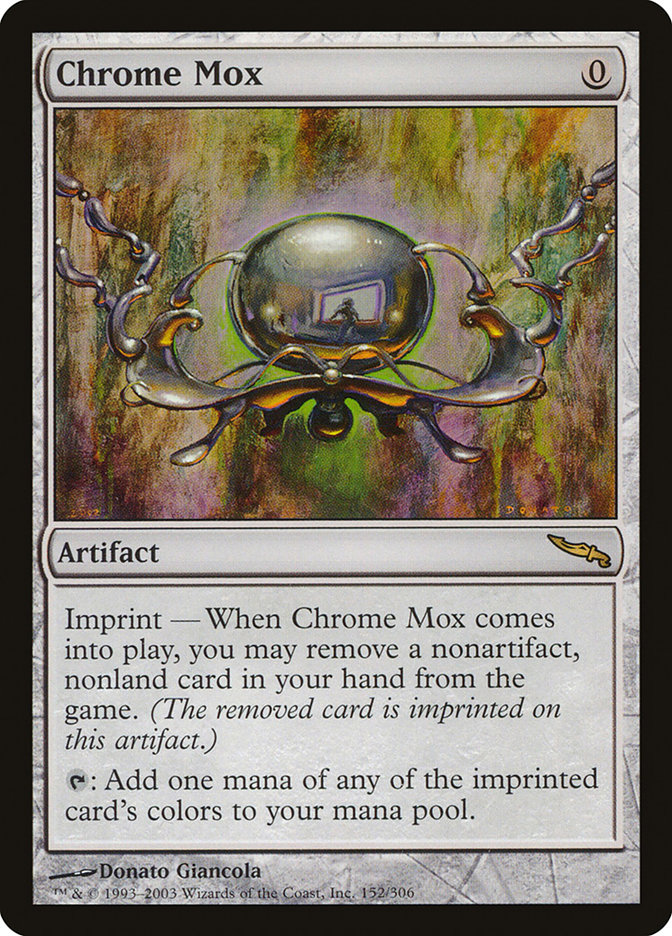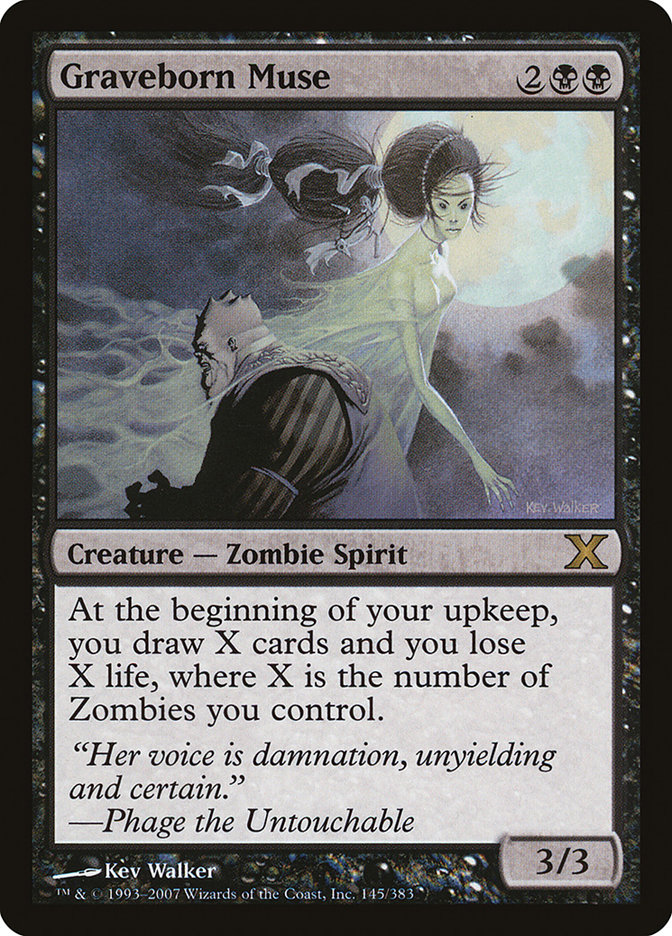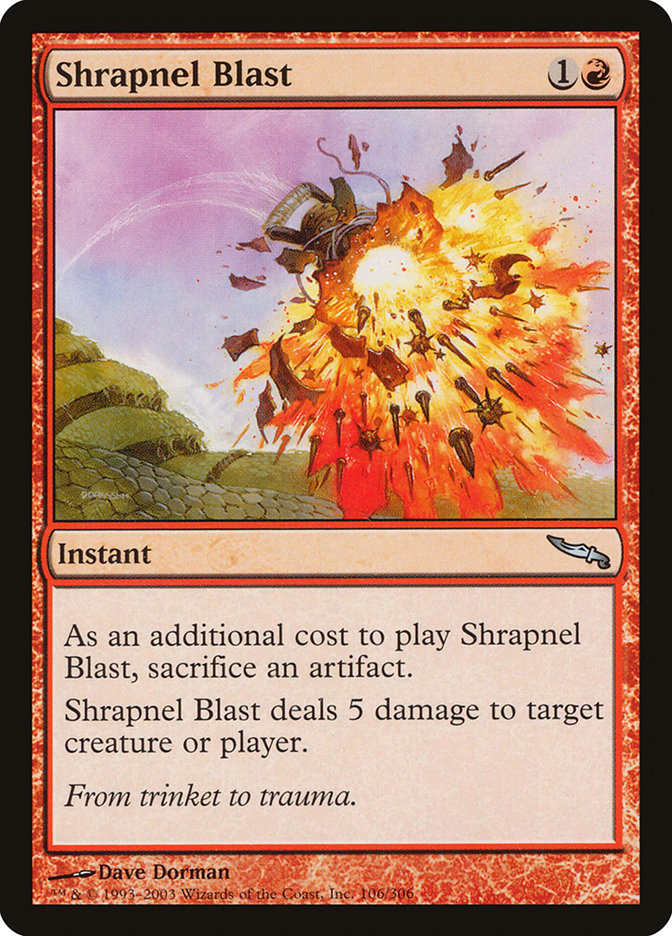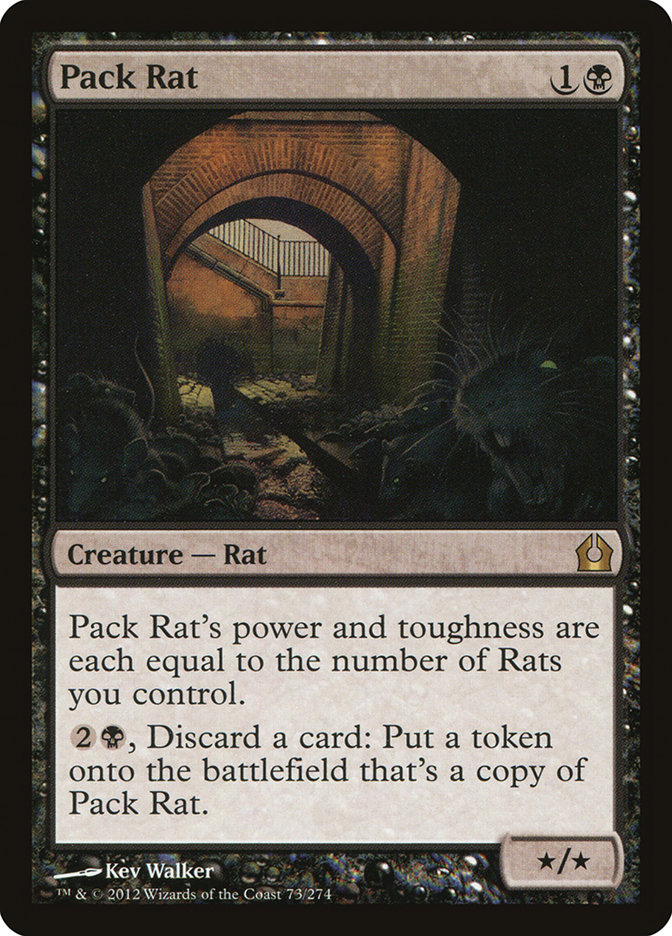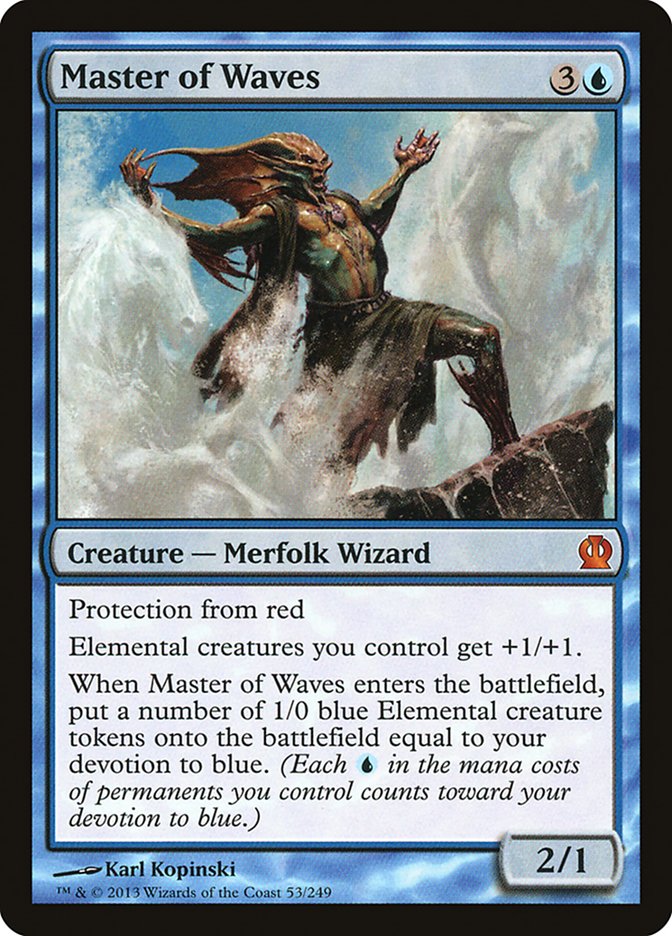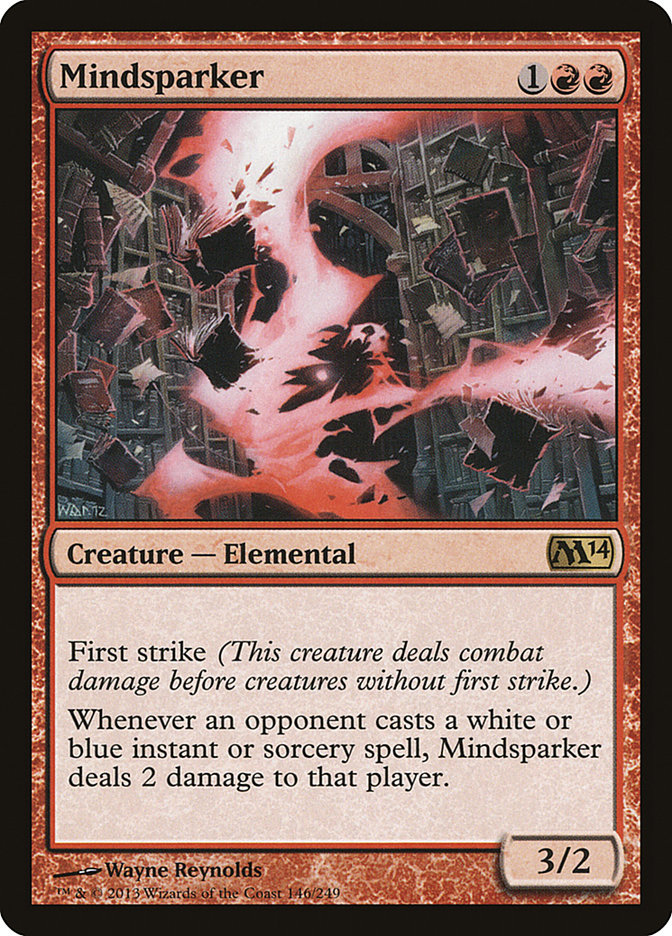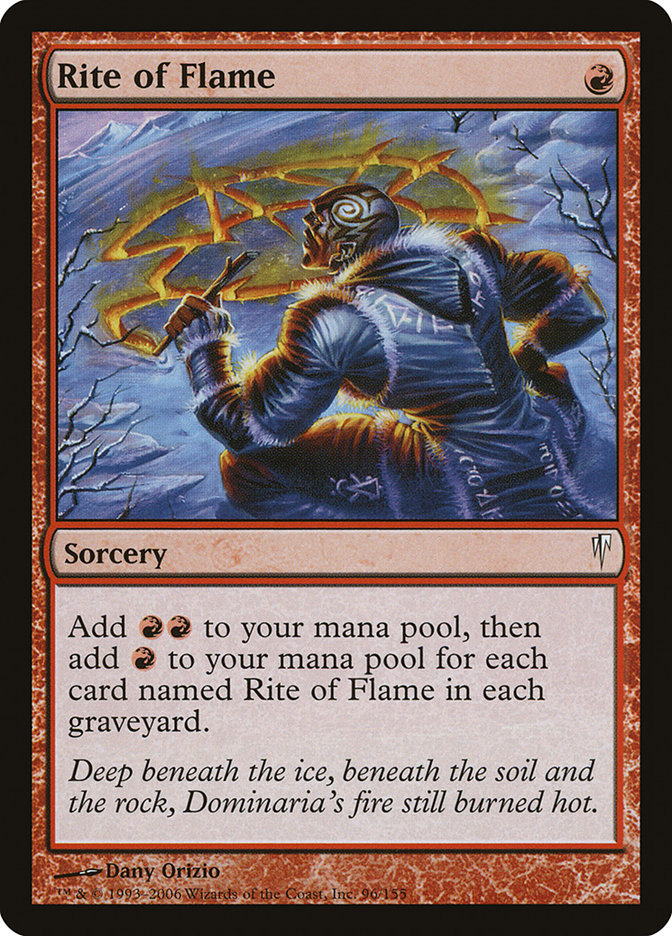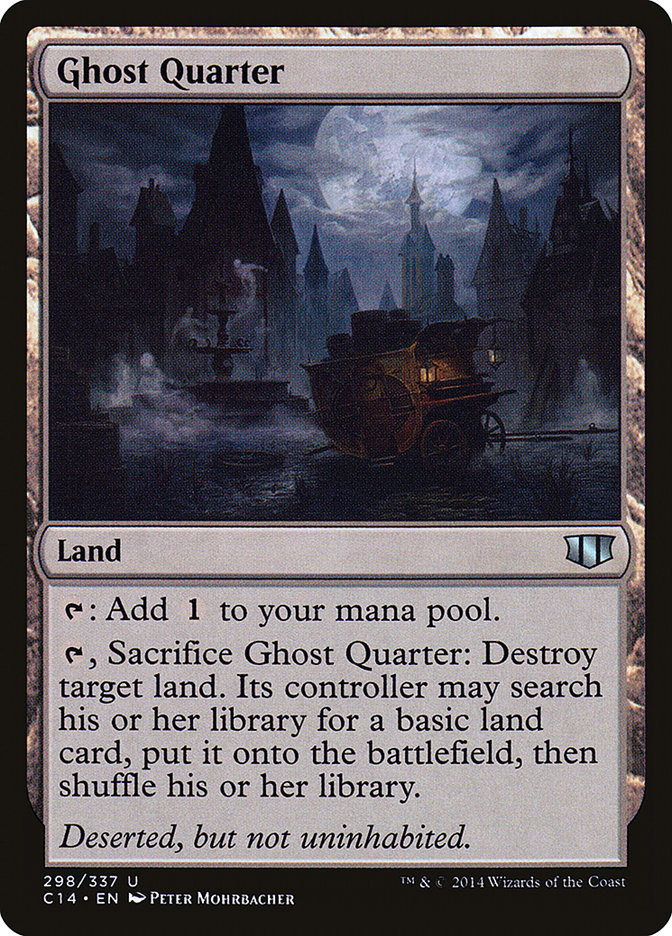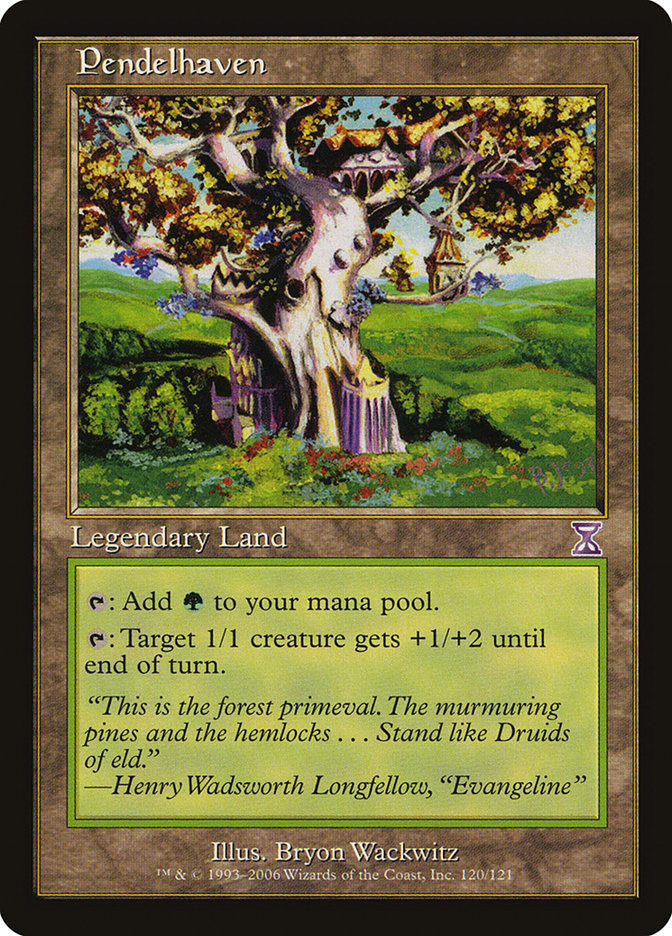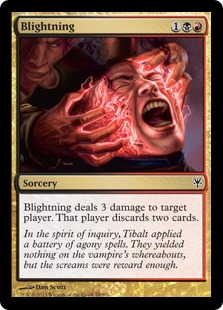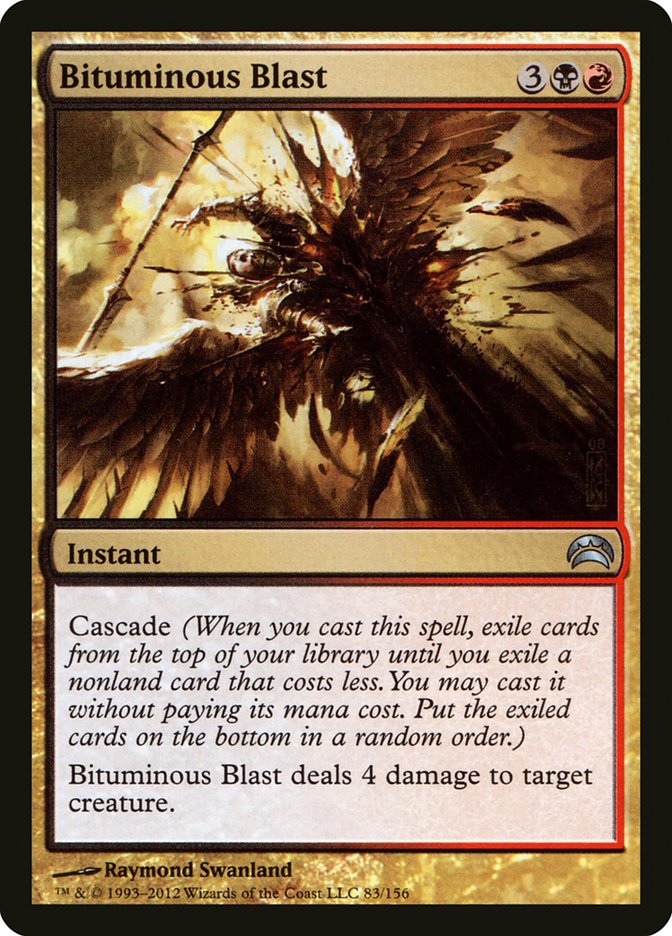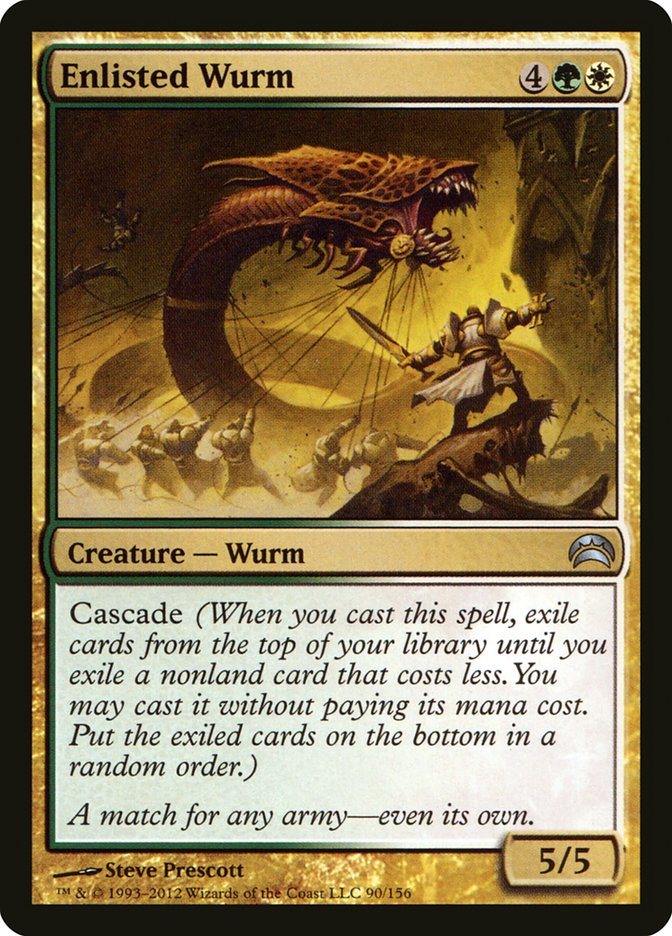As you get older you tend to look back at the body of work you’ve created over your lifetime.

I’m in the midst of starting up a new band, and it’s amazing to look back and think about the half-dozen bands I’ve been in during my life and the large
amount and variety of music I’ve created. Even with multi-year breaks in between some projects, the best of the best feels like it was written yesterday.
It is also rather telling of where I was in my life when each project was going on, and that would manifest itself in the music. The creative process is
one of the best things we can take part in as human beings, and one of the most memorable.

I think this is one of the reasons why Magic has done so well for so long. I certainly have fond memories of playing Goldeneye 64 with friends when I was a
kid, or finding a wounded townsfolk with a chilling story outside the cathedral in the first
Diablo, but these experiences were more about me taking in a form of entertainment. Most games and media are certainly engrossing, but they serve to take
you into their world. Once there, you have choices to make and paths to follow, but you aren’t really personally part of any creative process.
Magic is different.
I’ve been playing Magic for over half my life, and in those fifteen or so years I’ve created countless decks. Most are, of course, discarded, but some have
made it all the way to the top tables at the Pro Tour. If you look at each deck as a song, that’s the equivalent of getting to perform onstage at Madison
Square Garden. Even more interesting is the creative process that goes into deckbuilding. With a song it is usually a few people working together in a
confined space until they are ready to present a finished product to the public. In Magic, decks are always evolving. Information flows freely and
organically, and the hive mind lays a foundation of creative ideas spread across thousands of people. It really is pretty awesome.
Today I’m going to take a bit of a break from Standard to take a look back at the decks I’m most proud of working on over a fifteen-year Magic career.
#MyTop8Decks
Creatures (16)
Lands (21)
Spells (23)
Sideboard

8th place – B/R Zombies (Onslaught-Mirrodin Standard)
It makes sense to start this list at the beginning.
When I started playing Magic seriously, I only played Limited. I would draft a few times a day on Magic Online, and I was a regular in northeast Limited
PTQ Top 8s. Once I ventured out to the local game store and made some friends, however, I started to have access to cards for Constructed and a place to
play. After a few weeks at FNM, they told me that the State Championships were happening in New York City at Neutral Ground (RIP) and I decided to go.
Mirrodin
had just been released, and I built this beautiful monstrosity.
I had been playing black Zombie and Cleric decks for a while, but the card Karma was always a huge problem. I at first saw Vault of Whispers as a way to
play a Swamp that wasn’t a Swamp, but that would lead me down a very interesting path.
While the deck didn’t have any true one-drops, it made amazing use of Chrome Mox. The decks best opening was turn 1 Swamp, Mox, Mox, Phyrexian Arena, and
even without that I would often have an Arena or Graveborn Muse on the battlefield on turn 2 or 3. The deck would draw huge amounts of cards, and while it
played a pretty resilient beatdown game, at its heart it really was just a burn deck.
Splashing for Shrapnel Blast solved the Karma problem while also giving the deck a very fast way to close out games when I was drawing two to three cards a
turn at the expense of my life total. Between Shrapnel Blast, Consume Spirit, and Cabal Archon, it was not uncommon to just burn people out from
double-digit life totals over a turn or two. The lifegain from Consume Spirit and Cabal Archon also was vital in staying alive long enough to use the
stream of cards you would draw every turn.
While I would get paired down in the final round and lose my win-and-in for top 8, this deck and tournament was essentially what got me into playing
Constructed competitively. The deck looks wild and may not have been the best deck in the format (or even actually that good), but it was an absolute blast
to play.
7th – U/W Control (Theros-Khans Standard)
Creatures (1)
Planeswalkers (3)
Lands (27)
Spells (29)
- 2 Last Breath
- 2 Devouring Light
- 2 Divination
- 3 Jace's Ingenuity
- 4 Dissolve
- 3 Nullify
- 4 Banishing Light
- 3 End Hostilities
- 3 Disdainful Stroke
- 3 Dig Through Time
Sideboard

Anyone who reads my articles will be very familiar with this deck, and while the last deck didn’t have any real world success, this one is quite the
opposite. Over the last year I’ve had an Invitational top 8 and three SCG Open top 8s with different versions of Elspeth, Sun’s Champion U/W Control, and
it’s safe to say I was very sad to see her go.
When Sphinx’s Revelation rotated, everyone thought U/W Control was dead, but it just went from “absurd” to “quite good.” Instant speed control decks are
right up my alley, and this deck was fantastic at answering all of the midrangey things that were going on in Standard at the time. As someone who dislikes
midrange decks, this deck made me very happy, and I truly loved playing it.
I’ve already spilt about of gallon of digital ink writing about this deck in the past, so I won’t spend too much time on it, but it had to make the list.
6th – Naya Devotion (Return to Ravnica-Theros Standard)
Creatures (26)
- 4 Ash Zealot
- 4 Frostburn Weird
- 4 Burning-Tree Emissary
- 4 Boros Reckoner
- 2 Mindsparker
- 2 Purphoros, God of the Forge
- 4 Stormbreath Dragon
- 2 Fanatic of Mogis
Planeswalkers (5)
Lands (24)
Spells (5)

Some decks, like U/W Control, are built to endure through an entire format. They evolve and adapt as the format shifts and are in it for the long haul.
Some decks are built for only one event, and Naya Devotion was just that.
When Dan Jessup and I arrived in Las Vegas for the last SCG Invitational of 2013, the enemy was very clear. Mono-Black Devotion and Esper Control were the
two best decks by a mile, with Mono-Blue Devotion coming in as a close third. The format was so skewed that most other decks were almost non-existent. We
set out to build a deck that would be specifically very good against the big two decks, and we succeeded.
Most Mono-Red Devotion decks would splash either green for Domri Rade or white for Chained to the Rocks, with the former being good against control and the
latter being good against Mono-Blue Devotion and Mono-Black Devotion. We decided that because aggressive decks weren’t really viable that we could just
splash both. This gave us both the lategame we needed to go along with the answer to Desecration Demon and Master of Waves that was lacking from the deck.
We were so committed to crushing control we even ran two Mindsparker maindeck!
Dan and I would smash control deck after control deck on our way to a combined 13-3 record in Standard, but we would both run afoul in Legacy and fail to
make a real dent in the tournament, sadly. Regardless, while the deck was a complete non-factor a week or two after the event, it was a perfect choice for
the day. Some tournaments call for a metagame deck, and this was a good one.
5th – Sultai Megamorph (Theros-Khans Standard)
Creatures (23)
- 4 Satyr Wayfinder
- 3 Gurmag Angler
- 3 Tasigur, the Golden Fang
- 1 Torrent Elemental
- 4 Den Protector
- 4 Deathmist Raptor
- 4 Jace, Vryn's Prodigy
Lands (24)
Spells (13)

I’m not sure why I like this deck so much, but it is just one of my favorite decks that I’ve ever worked on. As someone who loves synergy, this deck is
just oozing with it. So many of the pieces just work together so smoothly that it feels more like art than a decklist. Jace, Vryn’s Prodigy discards
Deathmist Raptors and flips on turn 3 thanks to Gather the Pack, while you cast huge creatures for one mana and build up both your graveyard and your hand.
Perhaps that’s it- I just love synergy.
So much of Standard in the last year has been about powerful cards. Siege Rhino this, Mantis Rider that; undo everything you’ve done with a turn 4
Dragonlord Atarka. Many decks are either just very good singular cards surrounded by support spells, or just ways to cast very good cards very quickly.
I miss synergy-based decks. While at times it can go too far and feel like Wizards is just making the decks for us if they are too obvious, I love when
cards come together to be more than the sum of their parts. That sort of workmanship that takes okay cards to great heights makes me really happy.
This definitely wasn’t the best deck in its format, but it was powerful and a blast to play.
4th – U/B Teachings (Time Spiral-Lorywn Standard)
Creatures (10)
- 3 Shadowmage Infiltrator
- 1 Teferi, Mage of Zhalfir
- 1 Triskelavus
- 1 Venser, Shaper Savant
- 1 Mulldrifter
- 3 Shriekmaw
Lands (26)
Spells (24)

2007 would see an important step in my development as a Magic player: I would start to embrace control decks.
I had always played whatever the best aggressive deck was in pretty much every tournament I played in, as I felt I wasn’t good enough to handle the
“thinking” decks. This did do well for me as 2005-2006 saw me qualify for Nationals and my first few Pro Tours, but it was a definite limiting factor for
me as a player. Once I finally decided to pick up a U/B Teachings control deck, however, I loved it.
I was amazed with how flexible the deck was and how much I could customize it from event to event. While whatever White Weenie or Affinity deck was playing
had about 58 cards set in stone, I could change out huge portions of the control deck as I saw fit. These changes could be due to metagame considerations,
or even just to adapt to my own personal playstyle.
When Lorywn was released and States 2007 rolled around, I got to work updating my Block Constructed U/B Teachings deck for Standard. Surprise!
Cryptic Command is a good Magic card… what a great deckbuilder I was! Jokes aside, this deck was pretty awesome. It was a great and flexible control deck,
with tutoring ability and a great endgame. It also played Shadowmage Infiltrator, which is one of my favorite Magic cards.
This deck was also one of the first times I experimented with the sideboard juke. Splashing colors was absurdly easy in this deck, and as I was already
splashing green for enchantment removal I wanted a little spice in the sideboard. Most people would be sideboarding out their creature removal for game 2,
so I decided to just jam four Tarmogoyfs in my sideboard to punish them. Tarmogoyf was also a great roadblock against any aggressive deck, and would buy me
tons of time to set up. The best part of the juke was re-sideboarding for game 3, and putting your opponent in the tough spot of trying to decide if there
were going to be Tarmogoyfs in your deck or not.
I have to be completely honest though- I have no idea why I had a Psionic Blast in my sideboard.
3rd – Solar Flare Control (Innistrad-Scars Standard)
Creatures (9)
Planeswalkers (2)
Lands (26)
Spells (23)

While it’s pretty clear that I really like draw-go, instant-speed control decks, that’s really only a symptom of what I truly love about Magic deck design-
I love decks that have a concrete plan.
This is why I never care for midrange decks, as they never seem sure of what they are doing. A draw-go control deck’s plan is “don’t tap out, properly
evaluate and answer threats, don’t die.” Even though the Solar Flare deck is a control deck with zero counterspells in it, it has a very clear plan: “Kill
things, fill graveyard, cast Sun Titan, return great stuff, win the game.” As such, I built the deck to do exactly that.
Most Solar Flare-style decks at the time only played a few Sun Titans and Phantasmal Images along with other finishers, and did not play Thought Scour.
This meant that on turn 6 they wouldn’t always have relevant things to return, and their decks lacked velocity. Thought Scour was quick, cheap, and easy,
and it provided insane bonus value any time you hit a Lingering Souls or Forbidden Alchemy. I also included two Cavern of Souls to ensure that my Sun Titan
resolved on turn 6. When Sun Titan entered the battlefield, it would have a great variety of options to choose from, as removal spells like Dead Weight and
Ratchet Bomb were great answers, and even Snapcaster Mage could be brought back to rebuy a spell.
This deck had most of the things I look for in a deck. It’s got a solid plan, it’s powerful, and it knows exactly what it wants to do every game.
2nd – Goblins – (Extended)
Creatures (33)
- 4 Goblin Matron
- 1 Goblin King
- 4 Goblin Warchief
- 1 Goblin Sharpshooter
- 4 Goblin Piledriver
- 3 Gempalm Incinerator
- 1 Siege-Gang Commander
- 4 Goblin Ringleader
- 4 Skirk Prospector
- 3 Goblin Sledder
- 4 Mogg War Marshal
Lands (19)
Spells (8)

This was the hardest I’d ever worked on a deck.
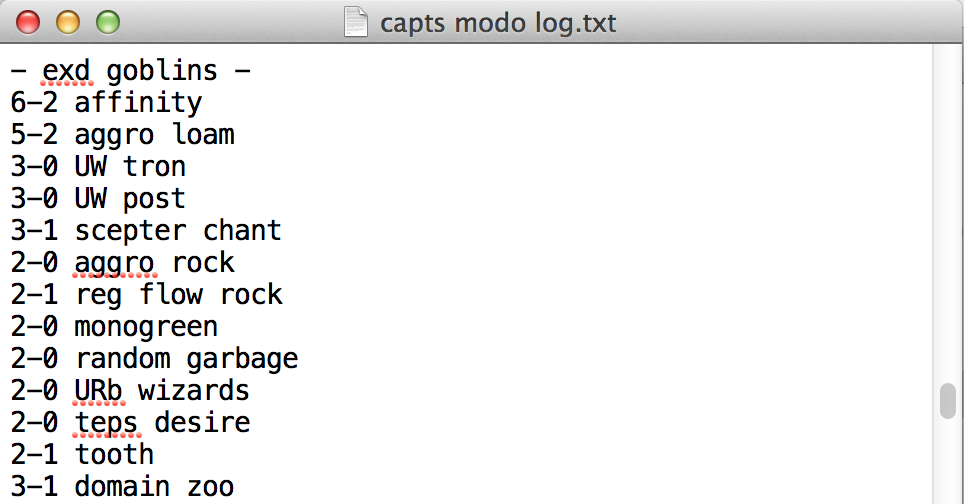
I played well over a hundred sanctioned matches with the deck, mostly on Magic Online, and my results showed. I made the finals of a PTQ with the deck, and
then the following weekend had my first major event top 8 at Grand Prix Dallas.
While I’ve played tons of different Goblin decks over the years, this is the one I made my biggest mark on. Legacy Vial Goblins has been a deck forever,
and various Legacy incarnations have always followed that mold. When Extended finally rotated, Wasteland, Rishadian Port, and Goblin Lackey were no longer
options. Aether Vial was also banned, leaving many of the key cards absent from the deck.
I had done some work previously with the deck, moving to Chrome Mox in lieu of Aether Vial, and it won me my first PTQ. However, that was the actual first week of the
Extended rotation, and once the format started to coalesce, things needed to change.
There were some Empty the Warrens-based Goblin decks that used Rite of Flame and Seething Song to power out big storm turns previously, but those decks
were always very inconsistent. So instead of taking the storm route all the way, I just borrowed the Rite of Flames to go along with my Chrome Moxen.
This made the deck insanely explosive, as Goblin Warchief would show up on turn 2 with alarming regularity. This was before Lightning Bolt or Path to Exile
were cards, and there was a dearth of efficient removal spells in the format. Goblin Warchief is amazing if it lives, and the format was not well-suited to
dealing with it quickly and efficiently.
Despite not having Aether Vial or Goblin Lackey, this deck was actually far more explosive than Legacy Goblins; I had dozens of turn-3 kills with the deck,
and even a pair of turn-2 kills! As always, the core of the deck was Goblin Ringleader, which allowed you to recoup the cards lost to Chrome Mox and Rite
of Flame. The deck was brutally fast against the combo and control decks, and it could shift gears into a very grindy deck against aggressive decks.
The other big innovation was using Ghost Quarter. Most of the combo decks in the format had zero non-basic lands in them, making Ghost Quarter an actual
Wasteland. Ghost Quarter was also very effective against various Tron decks and Affinity.
With so much experience with the deck, I also had a well thought out sideboard plan for every deck in the format. Against more aggressive decks where we
needed to take a more defensive stance and set up for the long game, Rite of Flame was not where we wanted to be. For those matchups I would sideboard out
the ritual effect, and I needed a land to bring in to have enough mana sources. Pendelhaven was the perfect land, as with all the 1/1s in the deck, it made
blocking super easy.
This deck was the perfect example of working very hard at a format, understanding how to best exploit it, and then having a solid plan for all possible
matchups.
1st – Four Color Cascade – (Shards of Alara Block Constructed)
http://sales.starcitygames.com//deckdatabase/displaydeck.php?DeckID=28937
Creatures (14)
Planeswalkers (2)
Lands (25)
Spells (19)

While I think I worked harder on the Goblin deck and that deck was more tuned, this deck represented perhaps the riskiest choice I’ve ever made in my Magic
career.
I chose to draw first at a Pro Tour.
Yes, that is correct. I chose to allow my opponent to go first, and it worked, as I would go 9-1 in Constructed. If I had just won a few more Draft
matches, Brian David-Marshall said that he thought my choice to draw would have been talked about for years, but instead I had to settle for one of my best
Pro Tour finishes at 33rd.
So why is this deck special? And why did I choose to draw?
Pro Tour Honolulu was Shards of Alara Block Constructed, which meant it was all Bloodbraid Elf all the time. Jund was insanely popular, and
Bloodbraid Elf into Blightning defined the format. Most decks were three or four colors, and there were very few ways to smooth your draws out if you were
screwed or flooded. So many powerful removal spells coupled with amazing blockers like Sprouting Thrinax made playing an aggressive deck almost impossible,
and people were doing crazy things like playing maindeck protection from black and red creatures just to try and gain an edge.
Because everyone was just Junding the crap out of each other, I wanted a deck that would be very good in the mirror but still be a powerful Jund deck
against non-Jund decks. Splashing white allowed me to accomplish all of those goals while also giving me an un-killable monster in Uril, the Miststalker.
Would you believe Uril, the Miststalker was a $30 card the night before the Pro Tour? The white removal also would exile Sprouting Thrinax, which was huge.
So why choose to draw?
The format was all about attrition, and because of this, Blightning was one of the best cards in the format. Because of cascade, all of your card advantage
was built into the cards, so if you had to discard a Bloodbraid Elf and a Bituminous Blast, you’ve discarded four spells of value. The other option was
discarding lands, and if you did that you’d never be able to cast your spells. This made many people dislike the format, as it felt very random.
As it was very hard to fall behind because there were few aggressive decks and all your spells were so good at catching up, getting the extra card from
going second would often leave you with the last spell standing and the win. This also allowed me to cheat on lands a bit as well (perhaps too much).
The list definitely wasn’t perfect, but the plan worked out almost perfectly.
The Song That Never Ends
Just like there will always be songs to write, there will always be new decks to build. Music is a never-ending journey, and all you’ve written before
tends to shape all you will write in the future. Magic is the same way, and deckbuilding and tuning is an art form in and of itself. I look forward to
hearing the songs my new band will create, and also seeing what decks the future holds.
What are your #Top8Decks?


